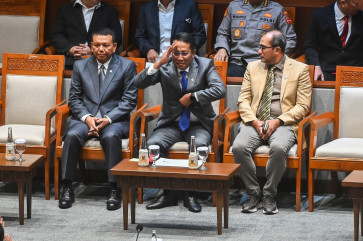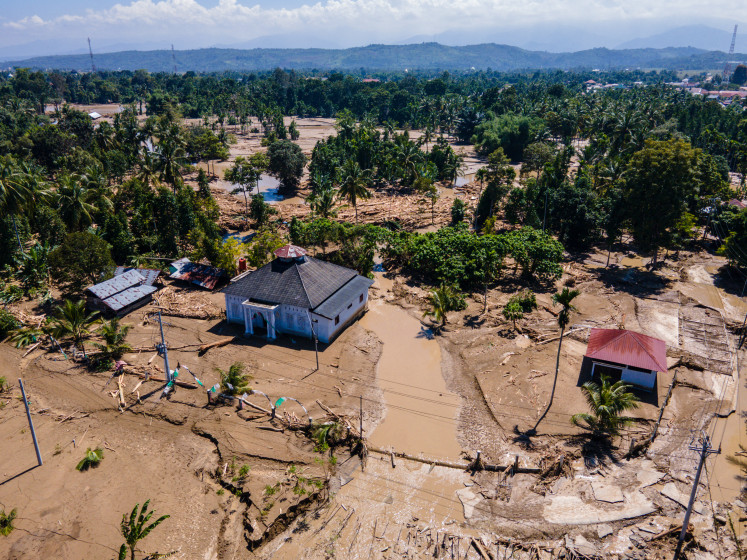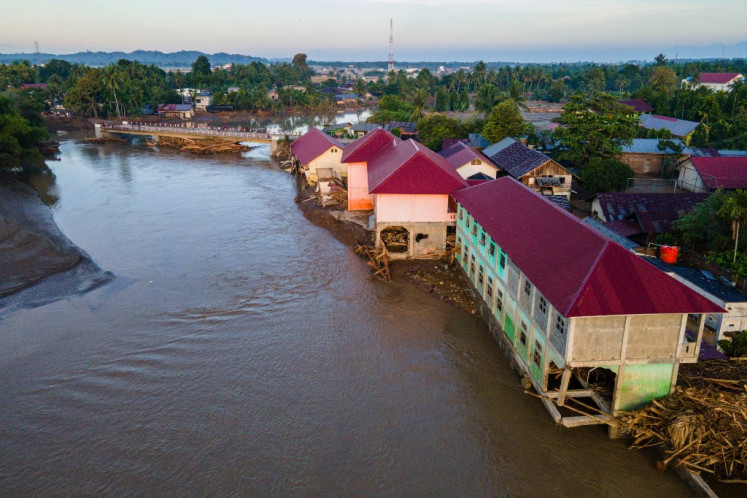Popular Reads
Top Results
Can't find what you're looking for?
View all search resultsPopular Reads
Top Results
Can't find what you're looking for?
View all search resultsPota komodo population dwindling
The population of the Pota komodo dragon has gradually declined through the years due to poaching
Change text size
Gift Premium Articles
to Anyone
The population of the Pota komodo dragon has gradually declined through the years due to poaching. Residents living around Watu Payung Lake, where the Pota komodo are found, hunt and kill the Pota komodo dragons because they often maul livestock, such as cows, goats, horses and buffalo.
The matter was disclosed by the head of the Tourism Product and Resources Development Affairs of the East Manggarai Tourism and Culture Agency, Damasus Ndama, to The Jakarta Post in Borong, East Manggarai, East Nusa Tenggara, on Wednesday.
Ndama said the Pota komodo was officially found in 2011 but had been present in Pota, Sambi Rambas district, in East Manggarai regency, East Nusa Tenggara, much earlier. Local residents call it the mbou.
As people became more aware of the existence of the Pota komodo, which has similar traits to the komodo dragon found on Komodo and Rinca islands and in the Waewull natural reserve, they gradually stop hunting them.
However, in 2011, when the East Manggarai Tourism and Culture Agency made a visit to Pota and saw komodo that had been wounded by residents, the agency asked residents to take care of it until its wounds had healed.
'The local residents tended to it and treated its wounds with turmeric. It was then kept in a cage until its wounds healed. Residents later released it into its natural habitat,' said Ndama.
Ndama added that the local residents made traps by using motorcycle brake cables, so trapped Pota komodo dragons were often wounded.
He said local residents had hunted and killed the komodo in Pota because they were unaware the animal was related to the rare komodo dragon.
'They have nearly the same traits as the komodo dragons found on Komodo and Rinca islands and Waewull natural reserve, where young dragons climb trees to prevent their parents from mauling them,' he said.
Upon hearing reports of the killings from local residents, the East Manggarai regency administration deployed guards that it recruited from among local residents to prevent people from hunting and killing the animals.
Another obstacle faced by the local administration is that the area around Watu Payung Lake has yet to be declared a conservation area.
Flores Culture and Environmental Democracy Forum head Rofino Kant told the Post on Wednesday that there was intense rivalry for land between humans and komodo in Pota.
One of the solutions, added Rofino, was designating a safe area for visitors, be they foreign or domestic, to feed the animals so that komodo and humans in Pota could live side by side for the sake of the animals' continued existence.
Rofino said given the vast number of tourists visiting Pota, the local community would consider the komodo and its habitat as part of the local ecosystem.
'I hope every stakeholder will immediately take measures to save the Pota komodo from extinction,' said Rofino.
He said that he once accompanied an American scientist to Pota to collect DNA from the Pota komodo.
'Test results showed that the DNA of the Pota komodo is similar to that of the komodo dragon found on Komodo and Rinca Islands and the Waewull natural reserve,' he said.
To further promote the province and especially the komodo dragon, East Nusa Tenggara Governor Frans Lebu Raya launched on May 8 the Sail Komodo event in Labuan Bajo, the seat of West Manggarai regency.
The grand finale of the event is slated for Sept. 14.










